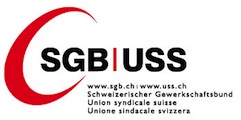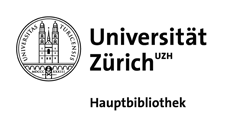Publications des institutions partenaires
Matthias Gubler and Christoph Sax: Skill-Biased Technological Change and the Real Exchange Rate
We sketch a model that shows how skill-biased technological change may reverse the classic Balassa-Samuelson effect, leading to a negative relationship between productivity in the tradable sector and the real exchange rate. In a small open economy, export goods are produced with high-skilled labor, in conjunction with capital and low-skilled labor, and are traded for imported...
Institution partenaire
English / 27/04/2016
Tommaso Mancini Griffoli, Christoph Meyer, Jean-Marc Natal and Attilio Zanetti: Determinants of the Swiss Franc Real Exchange Rate
We conduct an empirical investigation of the determinants of the Swiss franc real exchange rate. Theory and related empirical papers suggest various specific factors as potential determinants. We select some of these factors, and test their significance and magnitude in affecting the course of the CHF real exchange rate. Results stemming from a co-integration approach point to terms...
Institution partenaire
English / 27/04/2016
Konrad Adler and Christian Grisse: Real exchange rates and fundamentals: robustness across alternative model specifications
This paper explores the robustness of behavioural equilibrium exchange rate (BEER) models, focusing on a panel specification with Swiss franc real bilateral rates as dependent variables. We use Bayesian model averaging to illustrate model uncertainty, and employ real exchange rates computed from price level data to explore robustness to the inclusion or exclusion of fixed effects. We...
Institution partenaire
English / 27/04/2016
Barbara Rudolf and Mathias Zurlinden: A compact open economy DSGE model for Switzerland
This study describes a compact dynamic stochastic general equilibrium (DSGE) model fitted for the Swiss economy with Bayesian techniques. The model features two economies (small home economy, large foreign economy), five types of agents (households, producers of tradables, producers of non-tradables, retailers, monetary authority), nominal and real frictions, and a number of shocks...
Institution partenaire
English / 27/04/2016
Matthias Gubler: Carry Trade Activities: A Multivariate Threshold Model Analysis
In this empirical study, we analyze the relationship between carry trade positions and some key financial as well as macroeconomic variables using a multivariate threshold model. It is often stated that the Swiss franc serves as a funding currency. We therefore focus on carry trades based on the USD/CHF and EUR/CHF currency pairs over the period from 1995 to mid-2008. We conclude...
Institution partenaire
English / 27/04/2016
Raphael Anton Auer and Aaron Mehrotra: Trade linkages and the globalisation of inflation in Asia and the Pacific
Some observers argue that increased real integration has led to greater co-movement of prices internationally. We examine the evidence for cross-border price spillovers among economies participating in the pan-Asian cross-border production networks. Starting with country-level data, we find that both producer price and consumer price inflation rates move more closely together between...
Institution partenaire
English / 27/04/2016
Cyril Monnet and Thomas Nellen: The Collateral Costs of Clearing
In this working paper, we study the three generic clearing arrangements in the presence of two-sided limited commitment: simple bilateral clearing, segregated collateral clearing through a third party, and - most sophisticated of all - central counterparty (CCP) clearing. Clearing secures the settlement of obligations from over-the-counter (OTC) forward contracts that smooth the...
Institution partenaire
English / 27/04/2016
Filippo Brutti and Philip Ulrich Sauré: Repatriation of Debt in the Euro Crisis: Evidence for the Secondary Market Theory
The Euro Crisis has stopped the process of the European financial integration and triggered a strong repatriation of debt from foreign to domestic investors. We investigate this empirical pattern in light of competing theories of cross-border portfolio allocation. Three empirical regularities stand out: i) repatriation of debt occurred mainly in crisis countries; ii) repatriation...
Institution partenaire
English / 27/04/2016
Simone Auer: Monetary Policy Shocks and Foreign Investment Income: Evidence from a large Bayesian VAR
This paper assesses the transmission of monetary policy in a large Bayesian vector autoregression based on the approach proposed by Banbura, Giannone and Reichlin (2010). The paper analyzes the impact of monetary policy shocks in the United States and Canada not only on a range of domestic aggregates, trade flows, and exchange rates, but also foreign investment income. The analysis...
Institution partenaire
English / 27/04/2016
Thomas Nitschka: The Good? The Bad? The Ugly? Which news drive (co)variation in Swiss and US bond and stock excess returns?
Based on a vector autoregressive model, this paper shows that time variation in monthly excess returns on Swiss government bonds and stocks is predominantly driven by news of inflation and dividends, respectively. This finding is in marked contrast to US evidence which points to a more prominent role of excess return news in this respect. The bond market findings for both...
Institution partenaire
English / 27/04/2016
Linda S. Goldberg and Christian Grisse: Time variation in asset price responses to macro announcements
Although the effects of economic news announcements on asset prices are well established, these relationships are unlikely to be stable. This paper documents the time variation in the responses of yield curves and exchange rates using high frequency data from January 2000 through August 2011. Significant time variation in news effects is present for those announcements that have the...
Institution partenaire
English / 27/04/2016
Robert Oleschak and Thomas Nellen: Does SIC need a heart pacemaker?
Real-time gross settlement (RTGS) systems effect final settlement of payments continuously and on an individual basis. This generates a trade-off between liquidity needs and settlement delay. Against the background of reconstruction discussions, the paper analyses whether more advanced algorithms reduce liquidity needs and settlement delay if applied to the Swiss Interbank Clearing (...
Institution partenaire
English / 27/04/2016
Gregor Bäurle and Elizabeth Steiner: How do individual sectors respond to macroeconomic shocks? A structural dynamic factor approach applied to Swiss data
Surprisingly little empirical work is available on how individual production sectors respond to macroeconomic shocks. The model developed in this paper quantifies the impact of monetary policy, exchange rates and external demand on the various production sectors of the Swiss economy. Our results show that such shocks are incompletely transmitted and that their effect is...
Institution partenaire
English / 27/04/2016
Nikolay Markov and Thomas Nitschka: Estimating Taylor Rules for Switzerland: Evidence from 2000 to 2012
This paper estimates Taylor rules using real-time inflation forecasts of the Swiss National Bank's (SNB) ARIMA model and real-time model-based internal estimates of the output gap since the onset of the monetary policy concept adopted in 2000. To study how market participants understand the SNB's behavior, we compare these Taylor rules to marketexpected rules using Consensus...
Institution partenaire
English / 27/04/2016
Victoria Galsband and Thomas Nitschka: Currency excess returns and global downside market risk
We take the perspective of a US investor to assess cross-sectional differences in 19 bilateral, conditional currency excess returns in an empirical model that distinguishes between US-specific and global risks, conditional on US bull (upside) or bear (downside) markets. At first glance, our results suggest that global downside risk is compensated in average bilateral currency excess...
Institution partenaire
English / 27/04/2016
Elisabeth Beusch, Barbara Döbeli, Andreas M. Fischer and Pinar Yesin: Merchanting and Current Account Balances
Merchanting is goods trade that does not cross the border of the firm's country of residence. Merchanting grew strongly in the last decade in several small open economies, particularly in Finland, Ireland, Sweden, and Switzerland, and has become an important driver of these countries' current account. Because merchanting firms reinvest their earnings abroad to expand their...
Institution partenaire
English / 27/04/2016
Matthias Gubler and Matthias S. Hertweck: Commodity Price Shocks and the Business Cycle: Structural Evidence for the U.S.
This paper evaluates the relative importance of commodity price shocks in the U.S. business cycle. Therefore, we extend the standard set of business cycle shocks to include unexpected changes in commodity prices. The resulting SVAR shows that commodity price shocks are a very important driving force of macroeconomic fluctuations - second only to investment-specific technology shocks...
Institution partenaire
English / 27/04/2016
Christian Grisse and Thomas Nitschka: On financial risk and the safe haven characteristics of Swiss franc exchange rates
We analyse bilateral Swiss franc exchange rate returns in an asset pricing framework to evaluate the Swiss franc's safe haven characteristics. A "safe haven" currency is a currency that offers hedging value against global risk, both on average and in particular in crisis episodes. To explore these issues we estimate the relationship between exchange rate returns and risk factors in...
Institution partenaire
English / 27/04/2016
Simone Meier: Financial Globalization and Monetary Transmission
This paper analyzes the way in which international financial integration affects the transmission of monetary policy in a New Keynesian open economy framework. It extends Woodford's (2010) analysis to a model with a richer financial markets structure, allowing for international trading in multiple assets and subject to financial intermediation costs. Two different forms of financial...
Institution partenaire
English / 27/04/2016
Nicole Aregger, Martin Brown and Enzo Rossi: Transaction Taxes, Capital Gains Taxes and House Prices
Motivated by the search for instruments to contain future housing bubbles, we examine the impact of transaction taxes and capital gains taxes on residential house price growth. We exploit the variation in taxation across Swiss cantons, as well as within-canton changes in taxation over time. We relate these taxes to house price growth observed for 92 regions of the country during the...
Institution partenaire
English / 27/04/2016
Pages
Le portail de l'information économique suisse
© 2016 Infonet Economy












